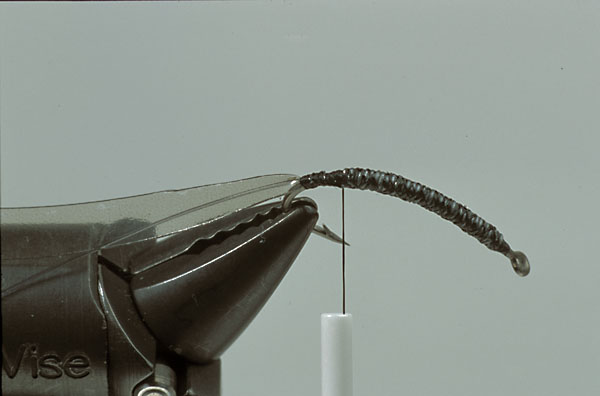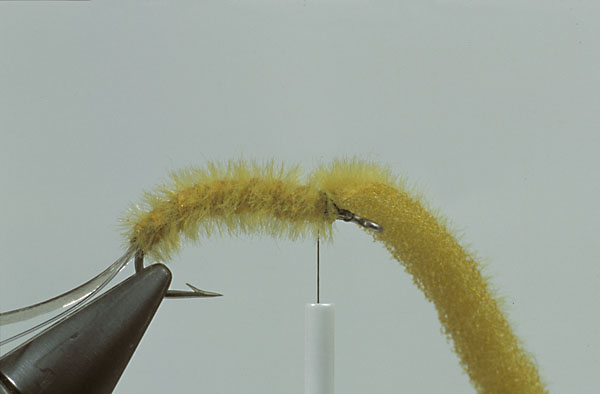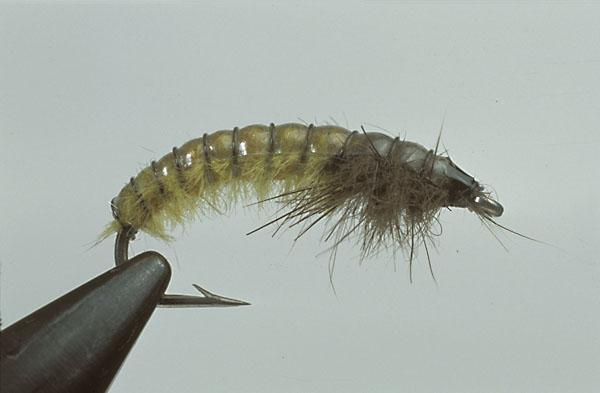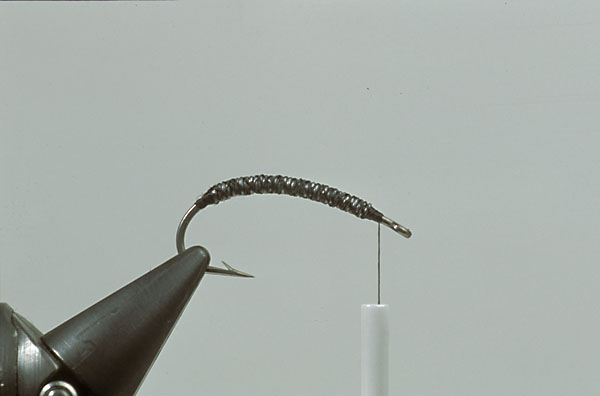Caseless Caddis (Ryacophila)






THE CASELESS CADDIS LARVA
Examine the gullet of just about any trout caught at just about any time of day, and just about any time of year, in just about any water, and the changes are you will find at least one caddis larva. Examine just about any submerged rock of stick, or disturb the bottom sediment on just about any piece of fresh water, and the changes are you will find caddis larva. A large number of them are those omnipresent little buggers that make those cases out of spruce needles, or tiny sticks or even fine gravel or weeds. On the other side you have a large group of caseless ones. For trout it doesn't matter if they are cased or not. Trout really love them. On a season-long base, caddis larva's are arguably the most prolific trout food and we are crazy not to use them. A caddis larva imitation should be in our fly boxes at all times.
IMITATIONS
In 1986 I started to collect caseless caddis species from several rivers, which I tried to imitate as close as possible during the winter months. The first patterns I tied were not pretty looking creatures, but rougher bottom bouncers. They were a little too heavy and too bulky and did not look like the real insect I was trying to copy. However, the flies worked reasonably well. Despite this, I discovered that it was not easy to tie realistic nymphs! Improvements were made several times but still I was not satisfied. My large Scandinavia nymph was even better and I had more confidence in them because he had proved to be very effective all over Europe. It is no secret that the caseless caddis imitations, which I use today where, developed after some long discussions with England's Oliver Edwards, accepted as one of the finest fly tiers in Europe. I told him a lot about my large Scandinavian patterns, fishing techniques and thoughts. We are good friends and share each other secrets and techniques without hesitation. Oliver taught me not only how to study the anatomy of an insect, but he also showed me how to combine and handle natural and synthetics in a more effective way. He also convinced me that heavily leaded patterns are not always better catchers then sparsely weighted nymphs. Nowadays I even believe that under some circumstances unweighted patterns can be more effective then weighted ones.
The first prototypes of the Caseless Caddis in my series were developed in the winter of 1987. At that time I still tied my patterns in probably 15 different colours. The first successful attempts to use the caseless caddis occurred in a Germany river where my friend Jack and I caught plenty of fish with this very effective nymph pattern. Now I use mainly yellowish and greenish variations. Therefore I have large quantity and sizes of those colours in my fly-box today.
IMPROVEMENTS
After my conversations with Oliver, it was time to experiment. I improved several of my patterns in the first months of 1988 and tried to give them a more realistic and better-looking appearance. One of them was my imitation of the caseless caddis nymph. I think I had learned a lot from Oliver vision about realistic nymph patterns very much. About the same time Gertjan Doedens, another Dutchmen designed a similar caddis larva. His idea of using flexibody as back material finally led me to this excellent caddis larva imitation. The reason that I used a curved hook to present my caddis is because I find out that disorientated larva often will drift in this way. This is why I mainly fish the pattern in a dead drift.
FISHING, RESULTS AND TECHNIQUES
The caseless caddis proved also to be an excellent pattern for beginners. It is easy to tie and extremely easy to fish with. I fish the Caseless Caddis mostly in dead drift and therefore blind, but when the conditions are right I love it to fish this pattern by sight in clear water. In deeper or more coloured water where I can not see any fish I always use a fine bite-indicator which I put directly on the connection loop where tippet and braided leader are knotted together. I fish it in an upstream dead drift, watch the bite-indicator and set the hook at any movement, no matter how small and trivial it sometimes might be. With this fishing technique even brooks or small streams with a lot of weed are much easier to handle. The second reason for using a bite-indicator is to present the nymph on the right depth.
TYING TECHNIQUES
- Put fine lead wire on the hook shank (two layers around the thorax). Optionally coat with varnish.

- Tie in 0.20mm/0.08" diameter clear monofilament for use as rib and to create the body segmentation.
- Secure the underbody well with thread and lacquer to be sure the materials will be not twist around the hook shank when the fly is finished.

- Cut out a small piece of transparent flexibody in the shape as shown in the photograph.

- Tie in the strip of flexibody.

- Tie in a narrow strip of Furry foam. If furry foam is not available use hare-tron or fine dubbing material.

- Wrap the furryfoam around the shank to form the abdomen.

- Use some dark mink or fitch guardhairs/underfur spun in a dubbing loop for the thorax. Make a well defined thorax.

- Pull over the flexibody. Secure it with your
tying thread.

- Wind the monofilament in at least 12 turns to the eye of the hook and tie off. You have now a good and effective segmentation, which is of vital important for this pattern.

- Pick out the mink hairs to define the legs, and the Caseless Caddis is complete.
